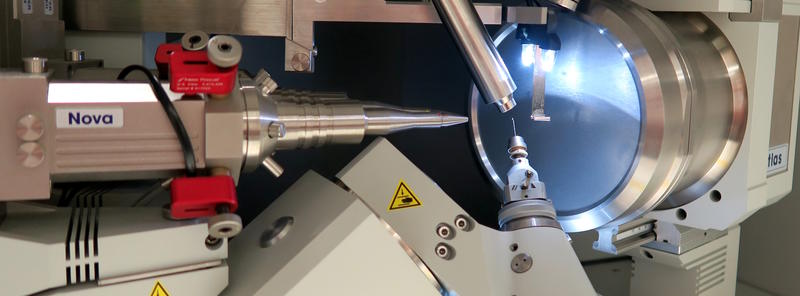Training
Doing your own structure determinations
Learning to do single crystal X-ray structure determination is more challenging and time consuming than learning many other analytical techniques for many reasons, including:
- It is not taught as a modern practical subject at undergraduate level;
- People believe pictures from diffraction data in a way that they do not believe the results of analytical techniques;
- The nature of the output files and the storage in databases means structures can be analysed en masse and errors critiqued and commented on in the literature in a way that does not occur with other techniques.
However, single crystal X-ray structure determination is an excellent technique to learn, especially if it is a critical part of your research, and/or you are likely to need to use it a lot. There are two avenues:
Small Banner picture - no idea what yet! pic005.jpg
Foundation Training Course for Structure Determination
In order to be able to get the most from the training offered, the Foundation Course is best suited to students with at least eighteen months left of their degree. It typically takes six to eight weeks to complete (depending on absences and holidays etc.) and consists of:
- Preliminary comprehension studies;
- Six practical sessions examining different aspects of data collection;
- Four workshops covering the basics of structure determination, symmetry, data processing and publication;
- A written assessment;
- A practical assessment.
Once the final assessments have been completed, work continues on research samples with support from Service Staff to ensure the best data are collected without wasting instrument time. Advantages of this support include:
- Priority booking of instrument time (to ensure staff availability);
- Continued training appropriate to the specifics of the research samples;
- Common pitfalls are avoided (preventing instrument time and samples being wasted);
- The best results will be obtained from the given samples preventing delaying publication caused by the need to re-synthesise, re-crystallise and recollect potentially years later.
Once the Foundation Course has been completed, it is expected Users will collect data at least three times per month, ideally once per week or more frequently in the early stages. It typically takes collecting data on half a dozen to ten research samples in quick succession to build appropriate confidence with the instrumentation and to be reliably able to collect satisfactory data reliably. Thus, it is expected that most people who collect at least one dataset per week will be in a position to work independently after around two months (this will take longer where samples are unsuccessful or datasets are collected less frequently).

Fast Track Access
This approach is most suited to those with extensive prior knowledge, typically post-doctoral workers who have completed a large amount of structural work in previous posts. As they will generally only be learning to use the instruments, their suitability will be assessed via a written assessment taken under exam conditions. Assuming this is completed satisfactorily, a suitable program will be developed that will suit their particular needs, typically beginning work with an introduction practical followed by supported work on their research samples.






